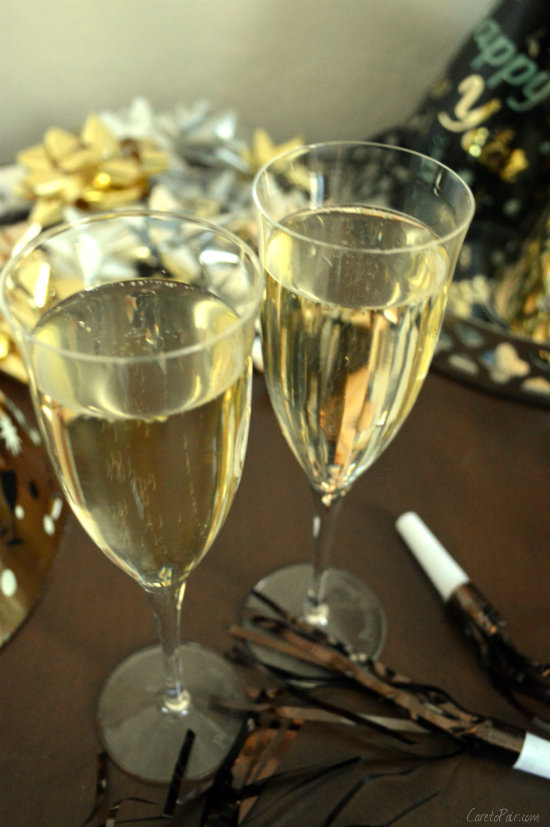Dani's Picks for Celebrating NYE with Champagne
Ah, Champagne. We drink it at weddings, we drink it at birthdays. We drink it at graduations, we drink it on holidays. We drink it at restaurants and nightclubs, swanky bars, and cocktail parties. Whenever there's a reason to celebrate, you can be sure Champagne will show up to the party.
There really isn’t any myth to why we drink bubbles while we're celebrating. Sparkling wine has more than a hundred years on soda pop, and although beer is our other BFF in the carbonated world, back in the day, the elite wouldn’t dare associate with it. With the help of the Noveau-Riche generation in the late 1800s and some great advertisements associating champagne with the high life, society has recognized Champagne as the drink of celebrations ever since.
For my drink-loving readers who may not know too much about Champagne, this is the one thing you should take away from this post: Not all sparkling wines are "Champagne". Champagne is a region in France and the most famous in the world for sparkling wines. Thanks to the demand of their wines around the world, Champagne prices are much higher than those, say, made in America, Italy, or Australia. However, their prices are definitely worth it--there is nothing in the world like Champagne, and if you're celebrating....anything...I definitely advocate paying the extra few bucks. (Champagne generally has a more bready, toasty character than most other sparkling wines of the world.)
Check out these pretty glasses from Perrier-Jouet. I've got about a hundred of them for some reason (available in gift packs around the holidays):
Anyway, I've been very lucky to taste some of the famous Champagne houses side-by-side blindly in the past, thus truly distinguishing my favorites. And although through in those tastings I realized I don't really care for the lightly-flavored Dom Perignon but am absolutely crazy about Krug, there was not one Champagne that I did not like. Here are my suggestions if you're looking to celebrate the new year with Champagne but have no idea what to get!
My Champagne Suggestions:
- Nicolas Feuillatte—my go-to Champagne, and my favorite to share with friends ($36.99 totalwine.com)
- Pommery Brut Royal ($44.99 totalwine.com)
- Taittinger La Francais Brut ($39.99 totalwine.com)
- Perrier Jouet Grand Brut—another one of my favorites for the price ($37.99 totalwine.com)
- Billecart Salmon Brut Rose—my favorite Rose under $100 ($84.99 total wine)
- Krug Brut NV—my absolute favorite (non-vintage) bottle! ($180 totalwine.com)
- Perrier Jouet Belle Epoque—beautiful bottle/presentation, makes a great hostess gift ($160 totalwine.com)
- Veuve Clicquot La Grand Dame—my favorite “elegant-style” Champagne. Skip the yellow-label Veuve and splurge on this one. ($149.97 totalwine.com)
My Non-Champagne Picks:
Don’t feel like paying Champagne prices? No one said you can’t drink other Sparkling Wines on New Years!
- Roederer Estate Brut $19.99 totalwine,com
- Mumm Napa Brut Prestige $16.97 totalwine.com
- Domaine Carneros Brut $22.99 totalwine.com
- La Marca Prosecco $13.49 totalwine.com
- Any fully sparkling Asti (Moscato grape) for those of you with sweet-tooths!
Finally, if you're looking at your bottle of Champagne but don't understand some of the lingo on it, here's a cheat sheet:
Champagne Terms
- Brut—Dry (meaning not sweet) (most common style)
- Extra Brut—Even more dry than Brut, meaning even less sugar is in the final mix (for purposes of your taste buds, there is very little difference between Brut and Extra Brut)
- Extra Dry—a bit sweeter than the brut style, but for purposes of your taste buds, there is very little difference (isn't that confusing?)
- Demi-Sec—relatively sweet style of Champagne
- Sec—although this literally means “dry” in French, it refers to a sweeter style in Champagne
- Doux—sweet, dessert style Champagne (very rare to find today)
- Blanc de Blancs—Champagne made with 100% white grapes, which are almost always Chardonnay
- Blanc de Noirs—Champagne made with 100% red grapes, either Pinot Noir or Pinot Meunier. Although it is made with red grapes, the juice is still white! (so don’t let that confuse you)
- NV—Non-vintage, which is the majority of all bottles (Champagnes use blends of wine from different years in their signature “house” style)
- Methode Traditional—the traditional method of making champagne or sparkling wine. All wines from Champagne must be made in the method traditional.
Happy New Years everyone and thanks for reading! I'm looking forward to a lot of blog progress in 2015! :) Please post any questions you may have about sparkling wine in the comments of this post, and I'll be sure to answer them!



